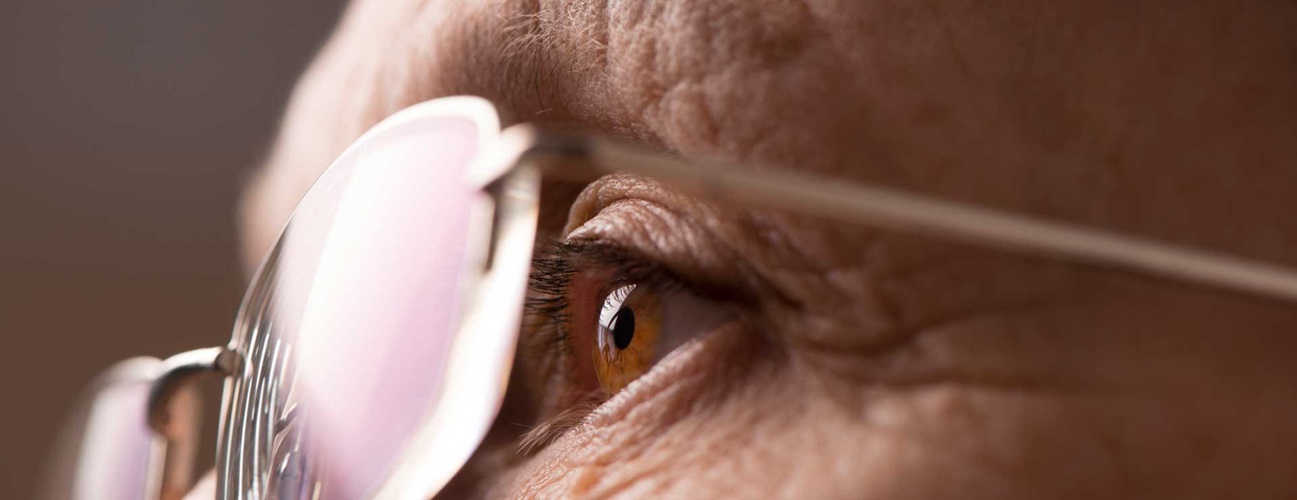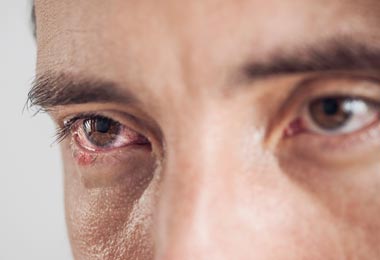Diabetic Retinopathy
Featured Expert:
What is diabetic retinopathy?
Diabetic retinopathy is a condition that occurs when diabetes affects the blood vessels and nerve tissue in the retina.
There are two stages of diabetic retinopathy:
- Nonproliferative retinopathy is the early stage of the disease in which blood vessels swell and leak. In some cases, this can cause macular edema (swelling of the retina) which may result in mild vision loss but can be treated. There can also be early changes to the nerve cells in the retina that may affect vision, in part due loss of adequate blood supply.
- Proliferative retinopathy is the advanced stage where abnormal new blood vessels grow on the surface of the retina. These vessels may break and bleed into the vitreous, the clear watery gel that fills the eye, and cause severe vision loss. This stage of diabetic retinopathy typically requires urgent treatment.
While diabetic retinopathy often cannot be completely prevented, you can reduce your risk of having it develop or progress. Controlling your blood sugar slows the start of retinopathy and prevents it from getting worse. It also lessens the need for laser surgery or other procedures that treat severe retinopathy.
What causes diabetic retinopathy?
Diabetic retinopathy is caused by changes in the blood vessels of the retina, the light-sensitive layer of tissue at the back of the inner eye. In some people with diabetic retinopathy, the blood vessels in the retina may swell and leak fluid. In others, abnormal new blood vessels grow on the surface of the retina. These changes may result in severe vision loss.Who is at risk for diabetic retinopathy?
Anyone with diabetes is at risk for diabetic retinopathy. The longer you have diabetes, the more likely you are to develop diabetic retinopathy. Your risk rises if you have diabetes and you also smoke, have high blood pressure, or are pregnant.What are the symptoms of diabetic retinopathy?
In the early stages of diabetic retinopathy, you may have no symptoms and your vision may not change until the disease gets worse. When the disease progresses, you may have blurry or double vision, dark or floating spots, pain or pressure in one or both eyes, rings, flashing lights, or blank spots in your vision.
A condition called macular edema may occur from diabetic retinopathy. Macular edema occurs when the macula, the central part of the retina, swells from the leaking fluid and causes blurred vision. When new vessels grow on the surface of the retina, they can bleed into the eye and lead to a decrease in vision as well.
How is diabetic retinopathy diagnosed?
Your eye doctor may do the following tests, as well as a complete health history and eye exam, to diagnose diabetic retinopathy:
- Visual acuity test. The common eye chart test that measures central vision ability at various distances.
- Tonometry. A standard test that checks the pressure (intraocular pressure, or IOP) inside the eye.
- Pupil dilation. An examination where your pupil is widened with eye drops for a close-up of the eye’s lens and retina.
- Ophthalmoscopy. An examination where your doctor looks very closely at the retina using a special magnifying glass.
- Fluorescein angiography. A test where an organic dye is injected into the bloodstream to show the blood vessels in the eye. This occurs while pictures are taken with a special camera and will show your doctor if the blood vessels are leaking or no longer supplying areas of retina.
- Optical coherence tomography. A test where light waves are used to make detailed images of the retina.
How is diabetic retinopathy treated?
Treatment for diabetic retinopathy will depend on your symptoms, age and general health. It will also depend on how severe the condition is.
People with advanced retinopathy have a good chance of keeping their vision if they are treated before the retina becomes severely damaged. Treatment for diabetic retinopathy may include one or a combination of the following:
- Laser surgery. This is often used to treat proliferative retinopathy and sometimes macular edema. It involves shrinking the abnormal blood vessels, or sealing the leaking ones.
- Vitrectomy. Vitrectomy is a procedure that involves removing the jelly-like substance (vitreous) that fills the center of the eye. The vitreous is replaced with a balanced saline solution.
- Injections. Certain medications can be injected into the eye to slow the growth of the abnormal vessels of the retina and to treat macular edema.
Can diabetic retinopathy be prevented?
Although it can be challenging to prevent diabetic retinopathy, there are steps you can take to reduce the risk of it developing or progressing.
Get a diabetic eye exam once a year
An eye exam can help diagnose eye problems for treatment and can alert you and your health care provider if your diabetes needs to be better controlled. Women with diabetes should have an eye exam before pregnancy or in the first trimester. Continue to be monitored every trimester and for one year after birth depending on the severity of the retinopathy.
Follow your diabetes management plan
The following steps should be taken to maximize your treatment:
- Take medicines as directed.
- Use insulin as directed, if needed.
- Eat a healthy and balanced diet to manage blood sugar level.
- Exercise to lower and help the body use blood sugar.
- Test blood-sugar levels regularly.
- Test hemoglobin A1c levels regularly.
- Test urine for ketone levels regularly.
- Have regular health care follow-ups to evaluate diabetes control and rule out or treat other risk factors, such as high blood pressure.
Better control of blood sugar slows the onset and progression of retinopathy and lessens the need for laser surgery or other procedures for treating severe retinopathy.







